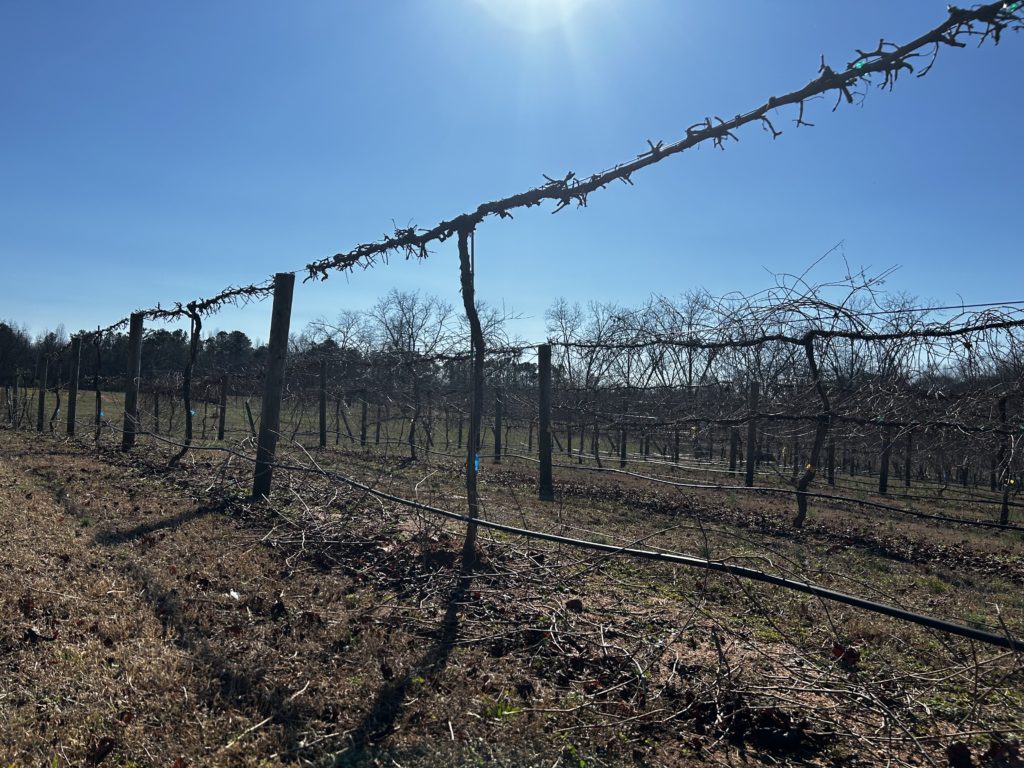
By Clint Thompson
It is time for an important management practice for grape producers in the Southeast.
Sarah Lowder, University of Georgia viticulture Extension specialist, discussed the importance of pruning and what strategies growers should consider when managing their vines.
“It’s one of the most important practices that you’ll do. It will set your crop potential for the following year,” Lowder said. “It’s truly trying to balance what your vine can produce and can produce well versus what it could potentially produce without any management.”

Timing
Lowder said the timing of pruning will depend on the size of the vineyard and how much labor a grower has to complete the action. The process often starts after New Year’s Day but can often start even before then. It generally lasts into February. But if farmers implement delayed pruning, which sometimes is necessary for frost protection, then they’ll also be doing it into March, depending on when budbreak would be.
“You don’t want too much canopy because it becomes more difficult to manage in the spring and summer, and also it can adversely affect the quality of the grapes. You also want enough canopy, enough vegetative growth to support your grapes that are growing,” Lowder said. “It’s like trying to choose the best buds to keep; trying to adjust around the weather I think. It’s definitely a little bit of an art practice for sure.”
A wet winter can also impact a grower’s management strategy to prune.
“Some people don’t want to necessarily go out in the rain to prune. In theory, moisture can also affect trunk disease infection. If you have unprotected wounds, fresh pruning cuts, it can allow a myriad of fungal organisms that can cause trunk disease to take hold of the vine,” Lowder added.
Producers can apply pruning protectants to help against any rain that might be in the forecast.










